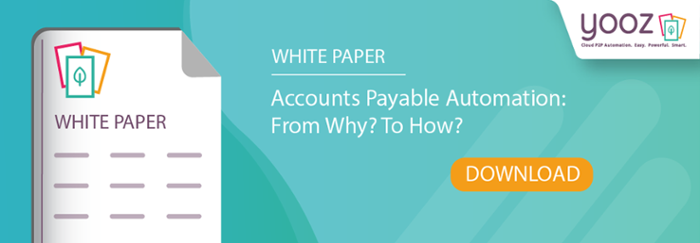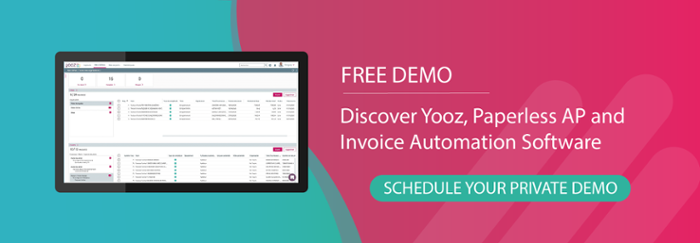Are you still using Excel to manage financial data? If so, you're missing out on incredible opportunities to streamline, modernise, and empower your finance department.
Whether it's handling Accounts Payable (AP), Accounts Receivable (AR), expense management, cash flow reporting, purchase orders, or even financial analysis, dedicated platforms exist to address every financial need. Today, there's no excuse for not automating or digitising financial processes. AFter all, by doing so you can achieve significant cost and time savings, reduce risks and inaccuracies, and free up finance teams to focus on other, value-adding tasks.
However, the urgency to incorporate digitalisation in finance goes beyond operational benefits. Perhaps the main reason it is so critical is that the roles, responsibilities, and challenges facing finance teams and CFOs are constantly evolving. According to statistics from the CFO Magazine, 65% of finance execs plan on having half of their duties automated by 2023.
Indeed, in a rapidly changing landscape of new policies and regulations, inflationary pressures, and worldwide scandals, finance teams need to stay ahead. Introducing finance automation means that they can.
What is finance automation?
Finance automation refers to the process of using advanced technologies to handle repetitive manual tasks, streamlining and managing financial data, processes, and operations at scale. Depending on the tool, platform, or solution it mayincorporate Robotic Process Automation (RPA) or Artificial Intelligence (AI) to effectively manage finance-related tasks.
One example of this digital transformation is the automation of data entry. Rather than have your finance teams and accounting function manually type expense data into a spreadsheet, employees can submit their expenses online for automatic review and processing. The final approval is then directed to the relevant manager.
By embracing finance automation, organisations can optimise their financial workflows, improve accuracy and reduce errors, and improve their efficiency. This approach to finance transformation empowers businesses (and financial professionals!) to dedicate more time and resources to strategic financial decision-making, analysis, and planning instead of dealing with laborious administration tasks.
-
What are the benefits of finance automation?
Most finance leaders no longer rely on the manual or paper-based finance processes typcial of the past. Instead, they leverage technology to take advantage of cutting-edge tools and automation solutions that improve financial processes. This helps them to adapt to an ever-changing market. Here, we'll outline several key ways that finance automation can help improve your accounting processes.
-
Cost savings
By eliminating manual processing, automation can save a single finance team between 40% and 75%, with payback ranging from several months to several years. As manual processes are eliminated, finance teams become more streamlined. And, when business units are streamlined and optimised, they utilise fewer resources while outputting the same (if not more) work. This is automation done correctly.
-
Innovation
Organised, automated processes ensure that teams spend less time worrying about how data is entered and processed, enabling them to spend more time identifying where they can add strategic value. With more time available, finance professionals can thoroughly analyse data and generate detailed financial reports, including comprehensive cash flow forecasts and other essential financial planning insights.
-
Adaptability and scalability
The implementation of finance automation makes it much easier for organisations to upgrade in the future. Once a solid business case is made and the tools implemented, there's no reason to revert back to repetitive manual, arduous processes. Instead, organisations can develop a foundation from which they can add seamlessly integrate new enterprise solutions to address emerging challenges.
-
Lower risk
Humans are incredibly prone to error, particularly when repeating a specific process over and over and over. Imagine manually entering key data from hundreds or even thousands of invoices each month. Instead, Robotic Process Automation (RPA) ensures that data is entered correctly based on the information received, minimising errors. Human intervention is only required to check any anomalies that are flagged, reducing the risk of costly mistakes.
-
Transparency
Finance automation tools provide a holistic view of processes, including data entry, expense reports, financial statements, along with a clear record of things like approvals. Whatever it is, finance automation tools provide a transparency that makes it easy for finance teams to review and validate processes, ensuring accuracy and compliance.
By embracing finance automation, organisations can unlock all of these benefits, optimising efficiency, reducing costs, fostering innovation among employees, improving business performance, mitigating risk, and ensuring that there are transparent and reliable financial operations.
Examples of finance automation
Finance teams face numberous challenges when it comes to tasks and processes, often struggling to balance all of the competing demands and moving parts required to keep the business (and cash flow) healthy. From handling invoices and managing payroll to document collection and reporting, there is a significant workload to managed.
To alleviate thee challenges and optimise efficiency, finance teams can leverage automation to streamline labour-intensive and time-consuming processes. Here are just a few examples of how finance automation can help finance teams:
-
Accounts Payable (AP) automation
Accounts Payable automation enables organisations to capture, analyze and process supplier invoices, assigning them to finance managers or budget holders through digital workflows. This eliminates the need for manual intervention, enabling the team to focus on reviews and approvals.
AP automation solutions offer an end-to-end experience, starting with invoice data capture using Optical Character Recognition (OCR) or smart data extraction, followed by data classification, validation, and integration with the accounting or ERP system.
-
Expense reimbursement
Few companies have avoided the pain of backlogged expense claims. Reimbursement requests seem relatively simple and straightforward, but when 10, 100, or 1,000 employees are submitting them through different channels and not using a standardised format, it becomes chaotic very quickly.
Finance automation resolves this issue by providing a centralized repository for expense claims and establishing a standard submission format. A structured, automated workflow ensures efficient movement of claims from submission to review to approval, complete with automatic notifications sent to approvers. Employees can easily track the status of any requests, and these systems (typically) seamlessly integrate with other financial systems.
-
Purchasing and procurement
Teams making purchases out of policy? Suppliers being onboarded that don't meet budgetary criteria? Missing information from requests? Finance automation helps enforce fiscal responsibility by preventing policy violations such as unauthorized purchases, onboarding non-compliant suppliers, or incomplete requests.
Finance automation software standardises purchase and procurement requests through customisable web intake forms or in-platform forms, easing any future auditing and reporting. Mandatory actions and rules can be implemented to minimise errors and ensure compliance with company policies.
By embracing finance automation, fiannce teams can save time, increase their accuracy, and improve their overall financial operations. This enables them to focus on more strategic tasks that contribute to the company's success.

Getting started with finance automation software
When it comes to financial process automation, one crucial aspect to focus on is the integration of the software into your existing infrastructure.
To ensure a smooth transition, it is essential to find a platform that not only meets your specific needs but also seamlessly integrates with your other systems and departments. Consider the following factors to make an informed decision:
Streamlined integration: Financial automation software that seamlessly integrates with your current infrastructure eliminates the chances of potential disruptions or complications during the implementation period.
User-friendly interface: An easy-to-use platform allows your team to quickly adapt and efficintly navigate the system. Having a user-friendly interface minimises training time and also ensures a smooth onboarding process.
Data accessibility: Ensure that the automation software provides easy access to relevant financial data. The ability to retrieve and analyse information quickly is crucial for informed decision-making and effective financial management. This is one of the strong benefits of having a cloud-based software platform.
Powerful reporting and benchmarking: You want to have a platform that offers comprehensive reporting and benchmarking features. These tools enable you to track Key Performance Indicators (KPIs), identify trends, and make data-driven decisions for future strategic planning and growth.
Scalability: Prioritise automation system that provide easy scalability, such as that offered by cloud-based automation platforms. Using such systems allows your organisation to easily accommodate growth without the need for additional headcount or extensive modifications.
By implementing finance automation software, your organisation can streamline processes, reduce manual efforts, and prepare for future growth.
Make it easy. Get Yooz.
Yooz provides a smart, powerful, and easy-to-use cloud-based Purchase-to-Pay (P2P) automation solution. The unique solution leverages both AI and RPA technologies to deliver an amazing level of automation, along with advanced data extraction capabilities to ensure data accuracy from the very start.
The Yooz solution also integrates into information systems or ERPs with more than 250 native connectors, exceeding any other solution on the market.
If you're thinking about automating aspects of your finance, we can help. Embracing digitalization in finance can transform your financial operations, making them more efficient and responsive to change. Request a private demonstration today.

.jpg)







